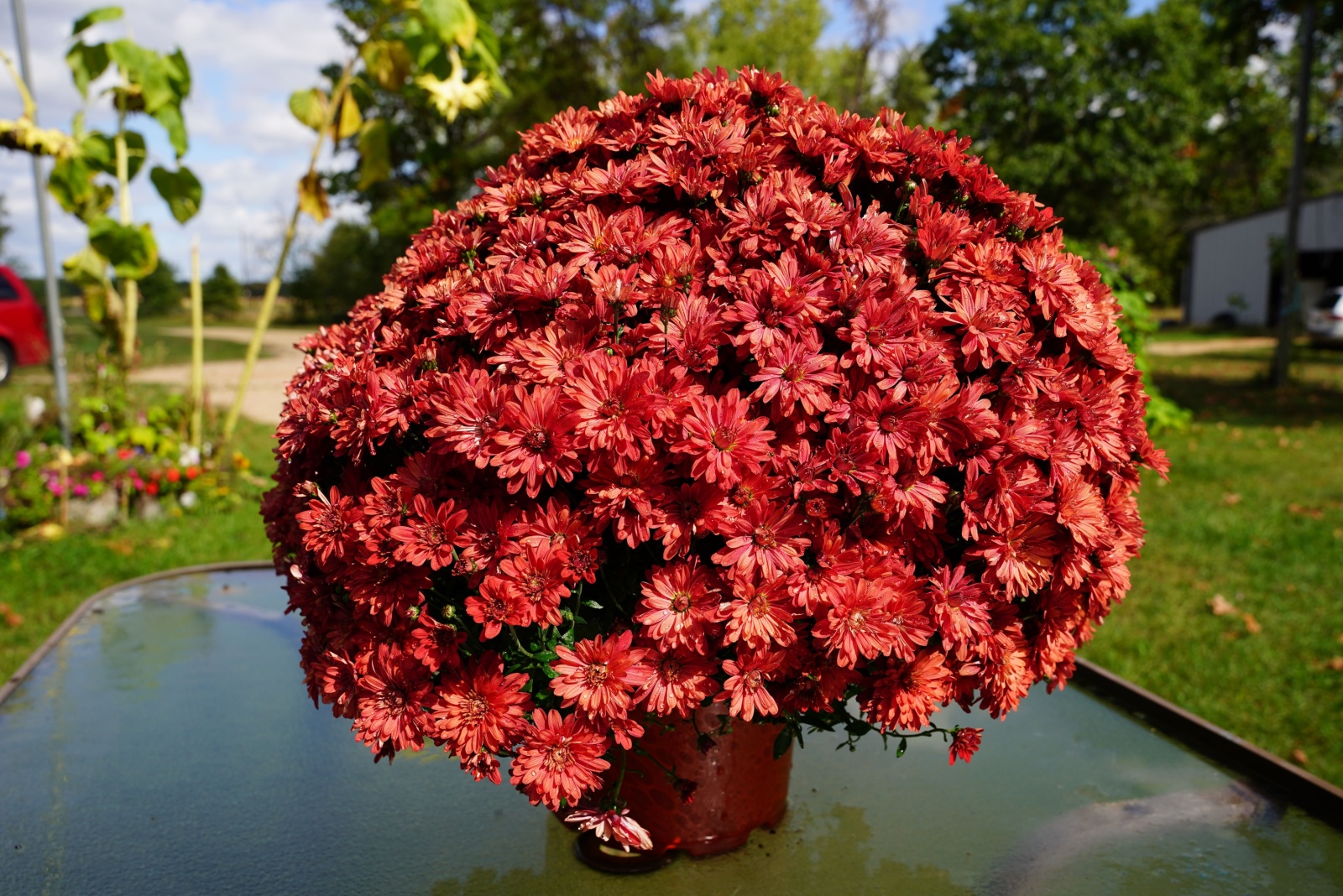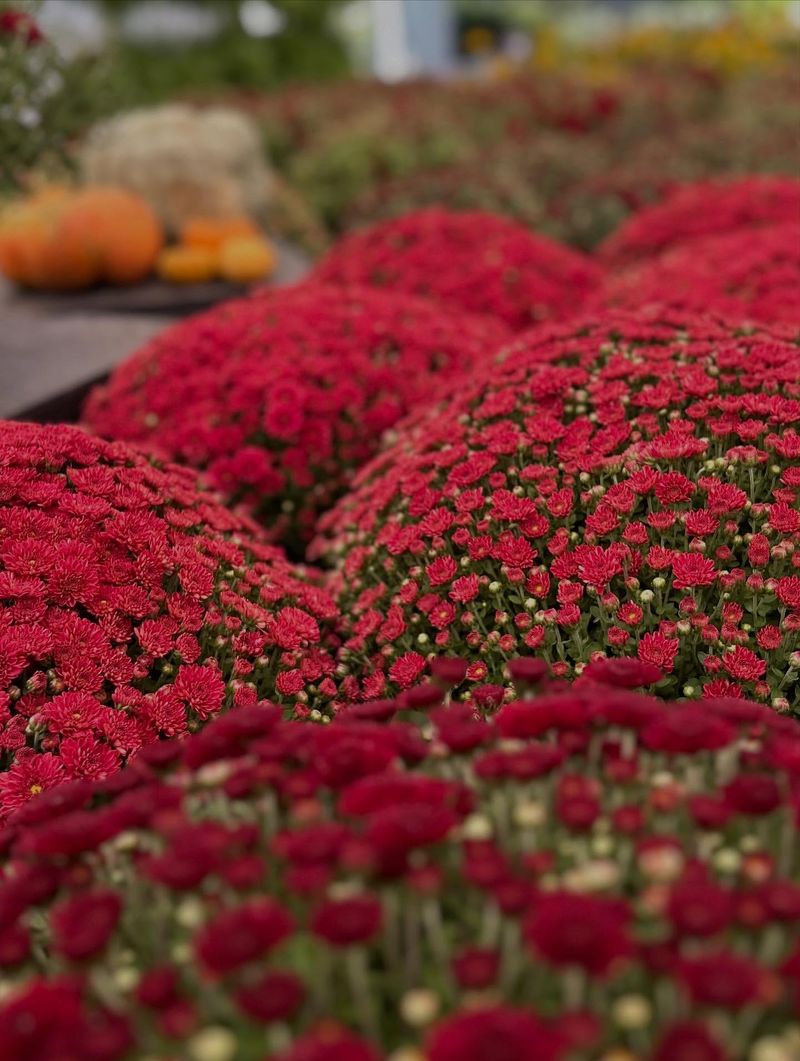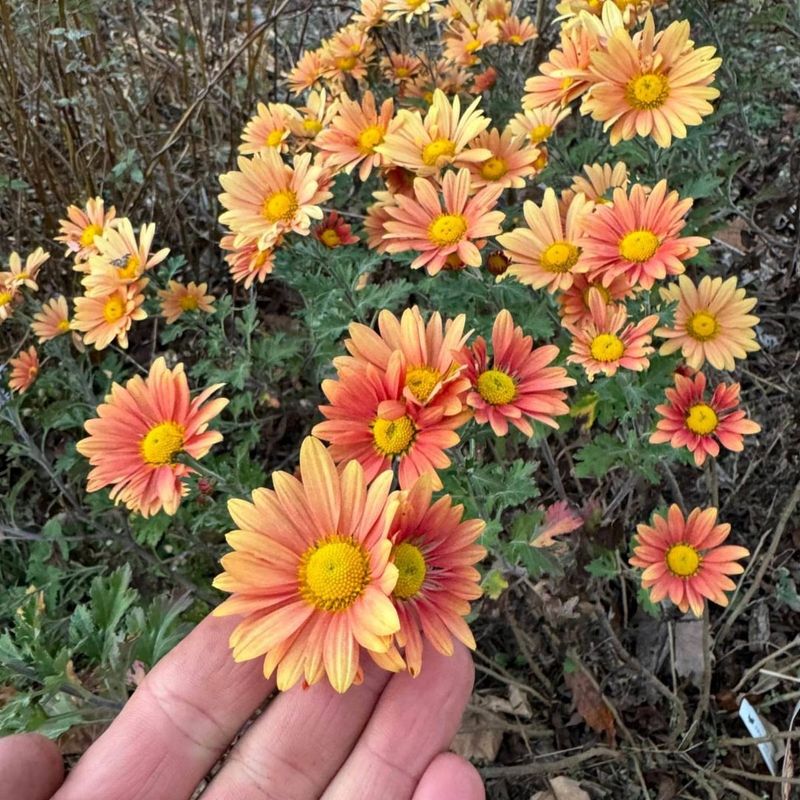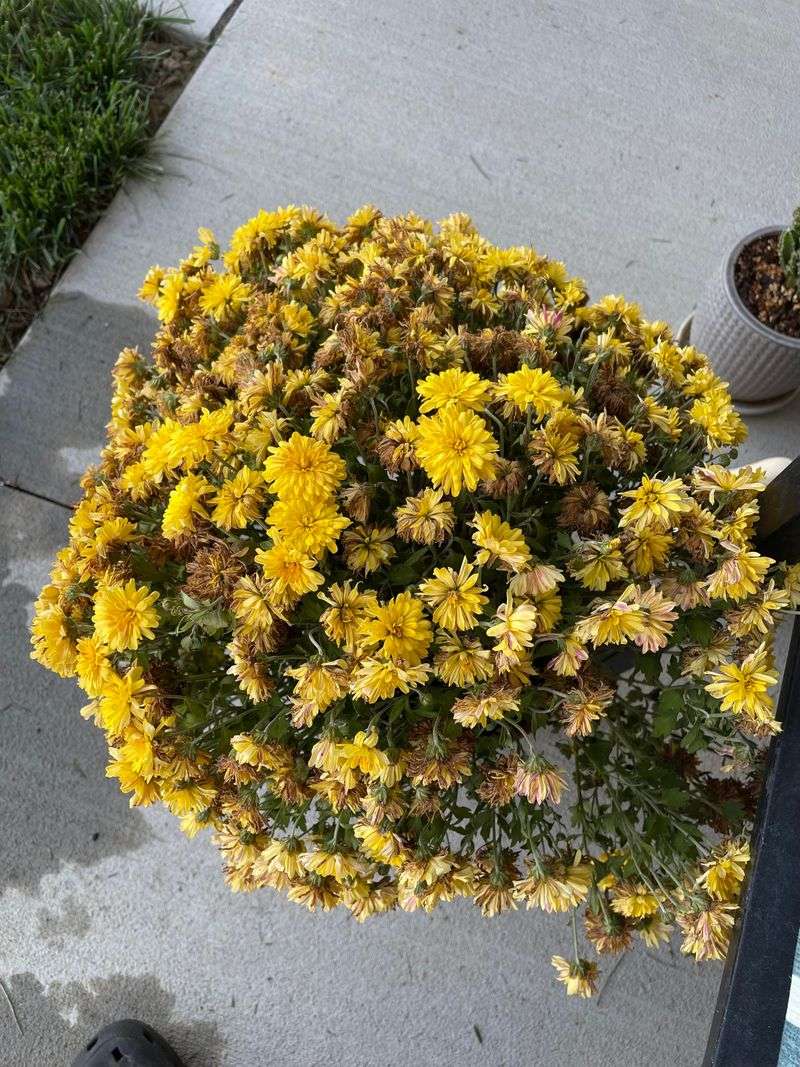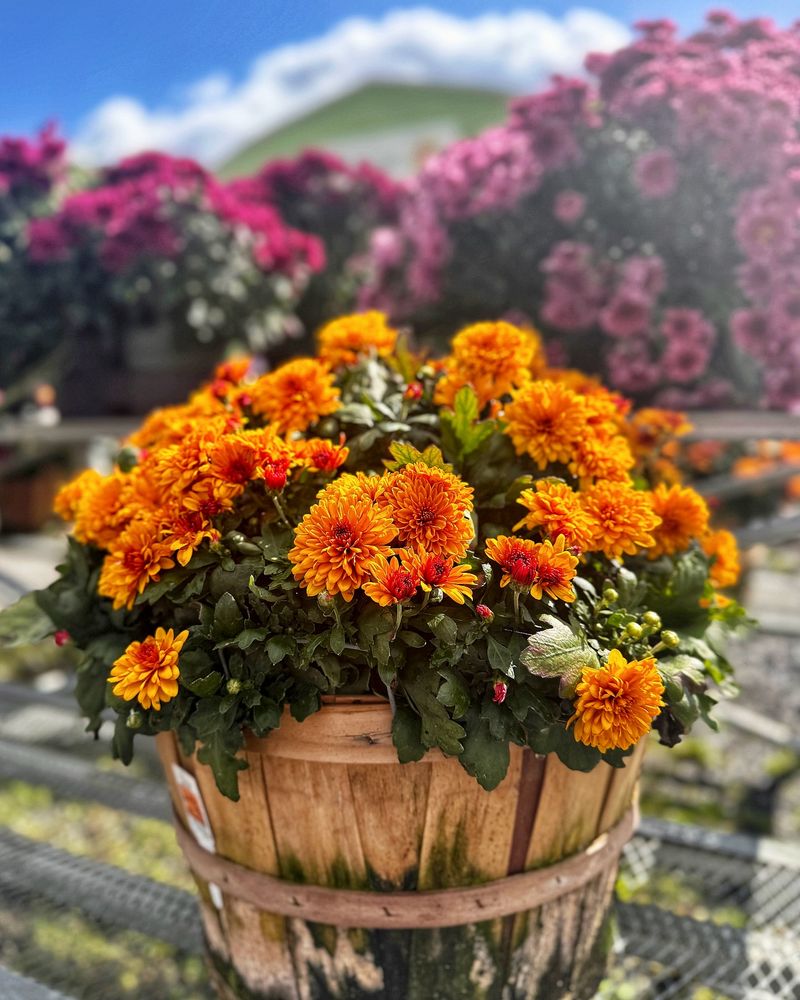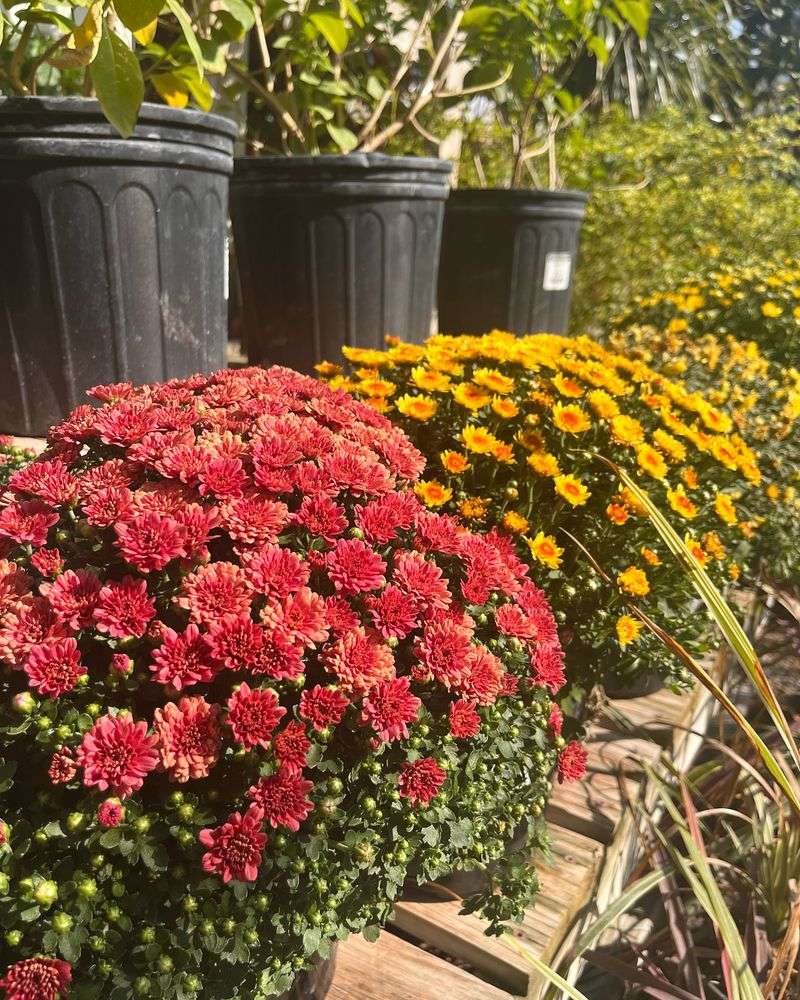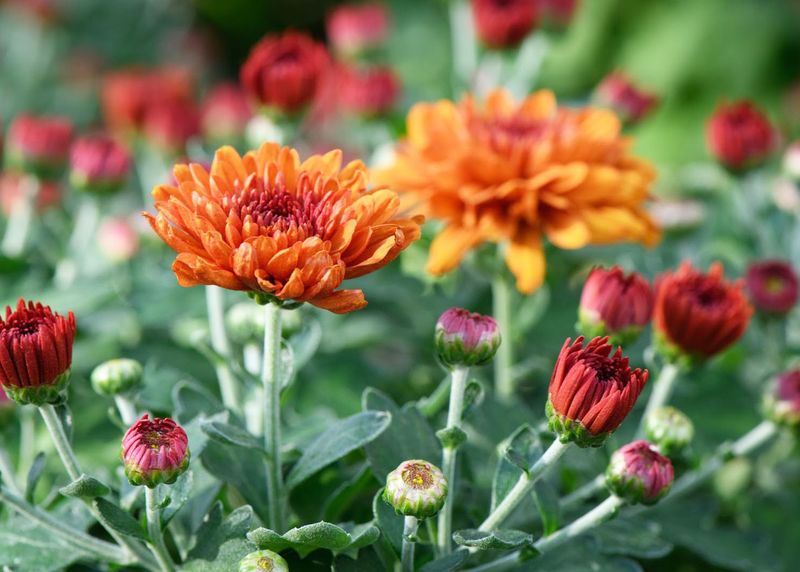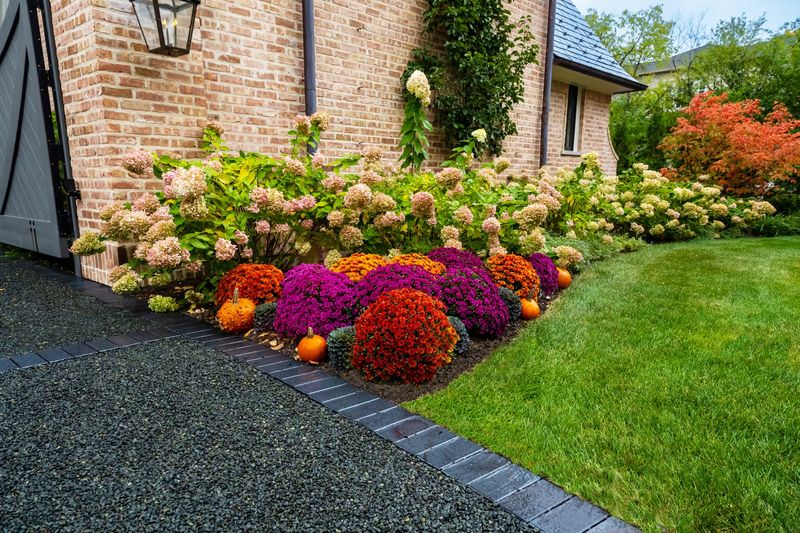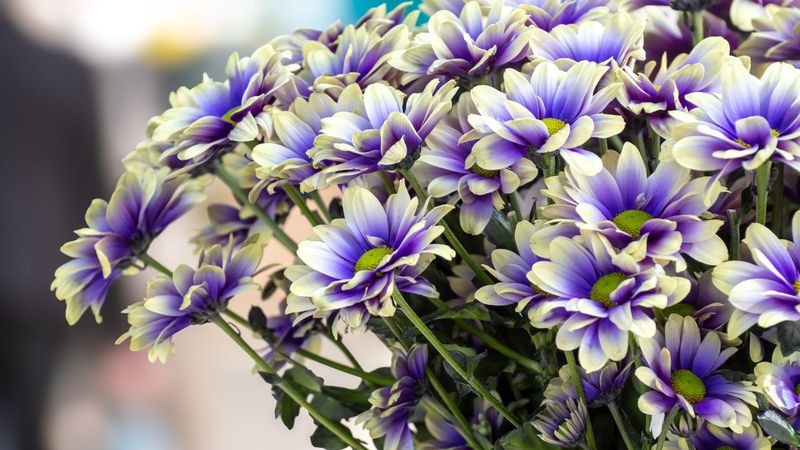Fall in Illinois means it’s time for chrysanthemums to shine in gardens across the state. These colorful autumn flowers can actually last through the entire season when properly cared for, despite our tricky Midwest weather swings.
With the right know-how, your mums can keep their vibrant blooms and avoid those disappointing brown, crispy leaves that often appear too soon.
1. Pick The Right Planting Time
Early September is your golden window for planting mums in Illinois. This timing gives roots enough opportunity to establish before the first frost hits, typically in mid-October for most of the state.
Plants settled in the ground at least 6 weeks before freezing temperatures have much better survival rates. Unlike spring plantings, fall-planted mums need this head start to withstand winter’s challenges.
2. Choose Hardy Varieties For Illinois Conditions
Not all mums are created equal when facing Illinois weather! Garden or hardy mums (Dendranthema × grandiflorum) outlast florist varieties every time. Look specifically for ‘Minnesota,’ ‘Maroon Pride,’ or ‘Betty Lou’ varieties.
Hardy mums develop deeper root systems that can withstand our temperature fluctuations. Many local nurseries specialize in region-appropriate varieties that have been pre-tested against our challenging climate patterns.
3. Master The Watering Schedule
Morning watering delivers moisture without promoting leaf diseases common in Illinois’ humid fall days. Aim for about 1 inch weekly, adjusting for rainfall. The goal: consistently moist soil without waterlogging.
Feel the soil before watering – if it’s dry an inch below the surface, it’s time. During those surprise Illinois heat waves in early fall, you might need to water daily, especially for container mums.
4. Feed With The Right Fertilizer
Low-nitrogen fertilizers keep mums blooming longer without excessive leafy growth. Look for formulations with higher phosphorus (the middle number) like 5-10-5, which promotes flower production rather than foliage.
Apply half-strength fertilizer every two weeks until mid-October. Stop feeding completely after that point – late fertilizing pushes tender growth that Illinois frosts will damage. Many experienced Illinois gardeners swear by compost tea for a gentle nutrient boost.
5. Protect From Surprise Frost Pockets
Illinois weather can swing wildly in fall! Keep frost cloth or old bedsheets handy for those nights when temperatures unexpectedly dip below 32°F. Cover plants completely before sunset and remove covers by mid-morning.
Low spots in yards create frost pockets where cold air settles. If possible, avoid planting mums in these areas. Container mums are particularly vulnerable – move them against the house or under eaves when frost threatens.
6. Perfect Your Pruning Approach
Deadheading spent blooms every few days signals the plant to produce more flowers rather than seeds. Simply pinch off faded flowers just above the first set of healthy leaves using your fingertips.
Avoid cutting back stems in fall – this common mistake removes developing buds! Save major pruning for spring. For those leggy mums that flop over after heavy rain (common in Illinois), try inserting inconspicuous bamboo stakes to provide gentle support.
7. Mulch Like You Mean It
A 2-inch layer of organic mulch keeps soil moisture consistent during those dry Illinois autumn days. Pine needles, shredded leaves, or cocoa hulls work beautifully while complementing fall colors.
Mulch also insulates roots from temperature swings. Keep it pulled back slightly from stems to prevent rot issues. For extra protection, add another inch after the first hard frost to help plants overwinter successfully in our challenging Illinois climate.
8. Relocate Potted Mums Strategically
Container mums need special attention as Illinois temperatures fluctuate. During September heat waves, move pots to afternoon shade spots to prevent wilting. As October brings cooler days, maximize sunlight by positioning containers where they’ll catch morning rays.
On unseasonably warm days, potted mums dry out fast! Group containers together to create humidity pockets. For overnight protection during the first light frosts, move pots against south-facing walls where residual heat radiates.

